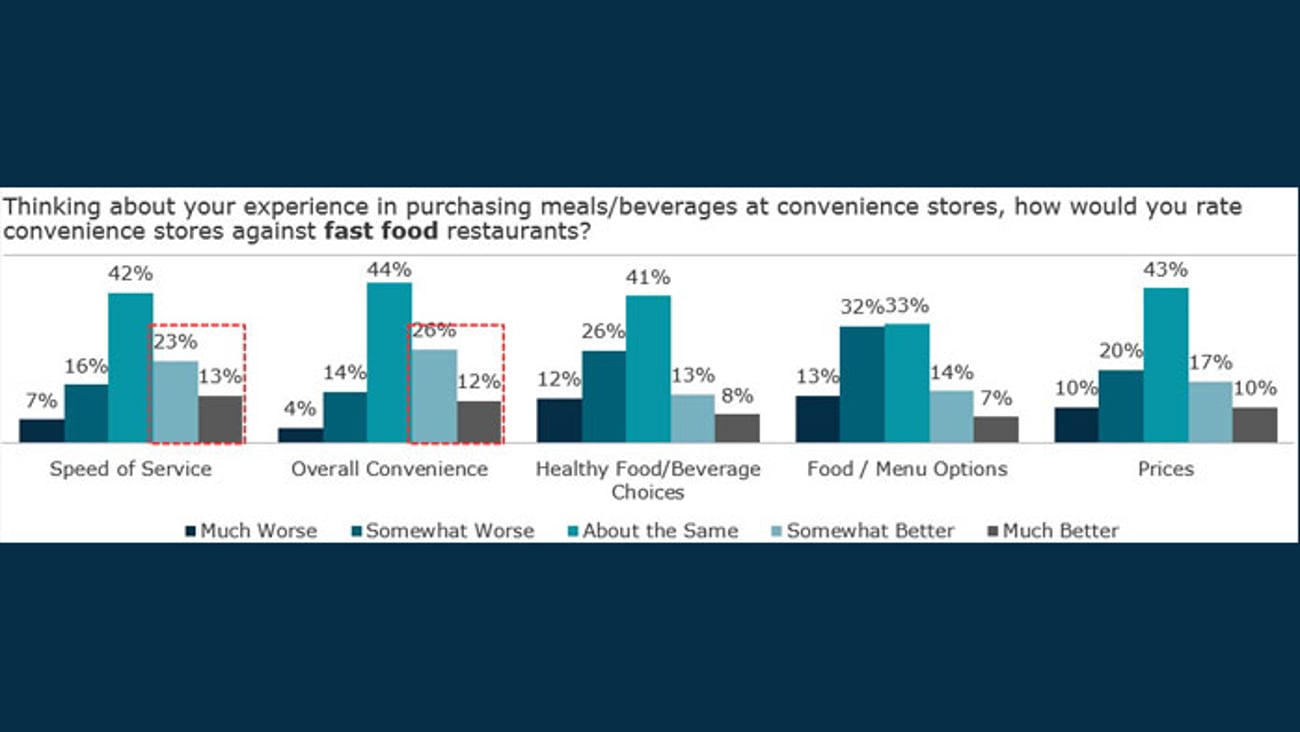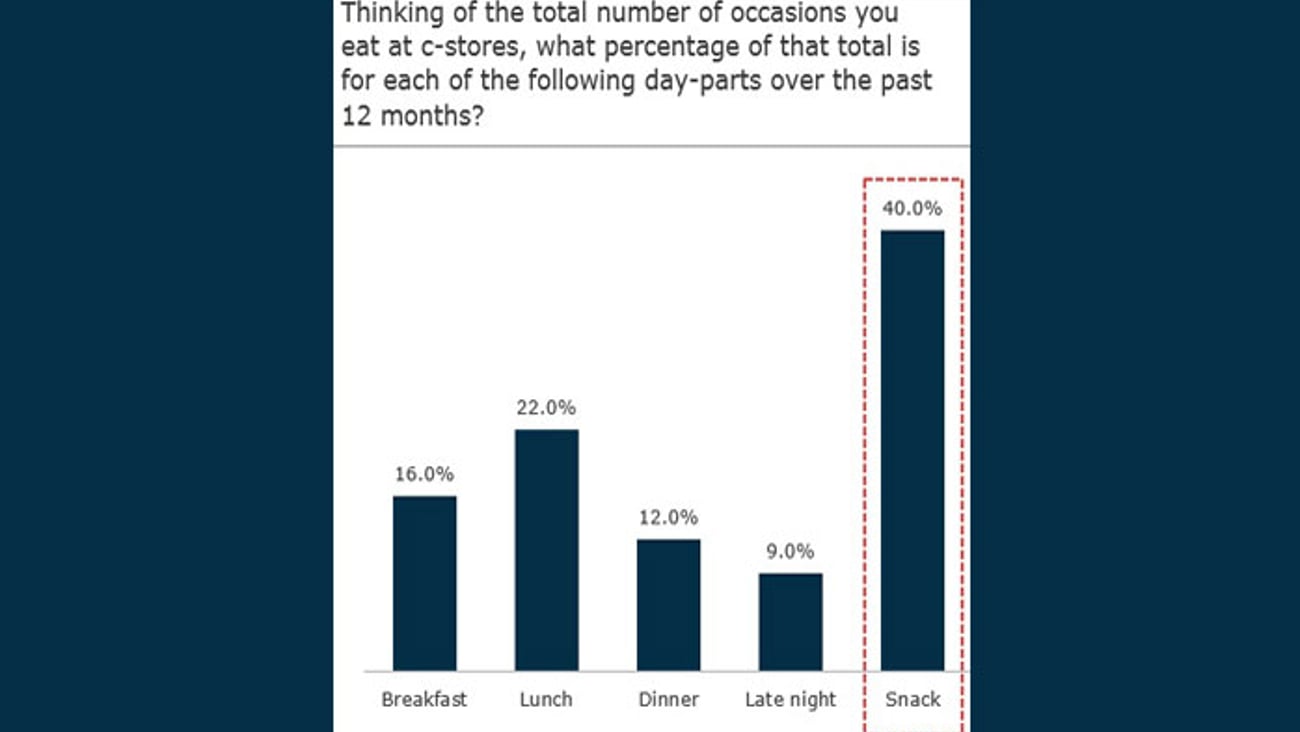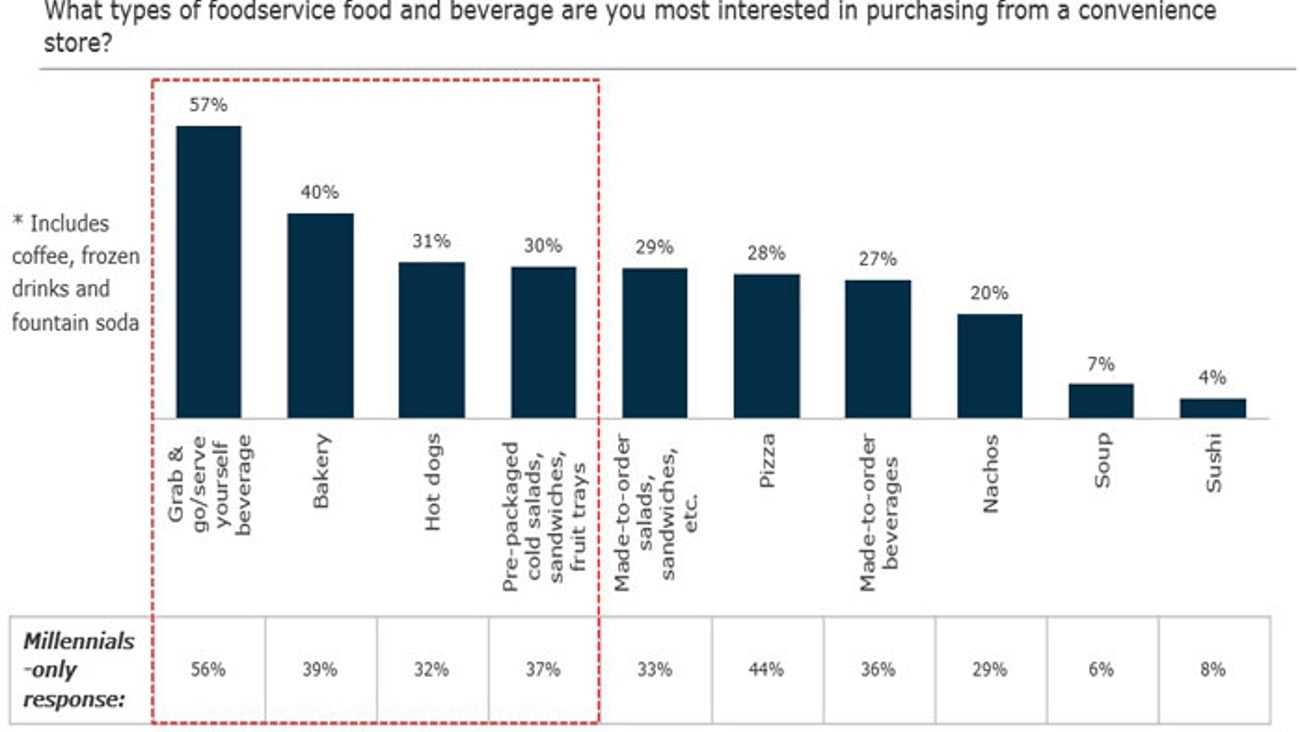What Consumers Want From Convenience Stores Today: Part 1
NATIONAL REPORT — Consumers rate their experience in purchasing meals and beverages at convenience stores much better than fast-food or fast-casual restaurants in terms of speed of service and overall convenience.
The majority also say that ready-to-go/serve-yourself foods, beverages and snacks are their preferred type of foodservice when they shop at a convenience store, according to a newly released Convenience Store Consumer Study by AlixPartners, a global consulting firm.
Lower percentages of consumers rated c-stores ahead of fast-food and fast-casual restaurants in regards to healthy food/beverage choices and menu options. However, they did give c-stores the nod for better prices than fast-casual establishments.
The online study was conducted this past fall among 1,018 U.S. adult consumers across all regions, demographics and income levels.
Other key findings include:
- Foodservice is the primary c-store purchase category (picked as tops by 28 percent of participants), but 40 percent of these shoppers view it primarily for snacking.
- 57 percent say ready-to-eat is the type of foodservice they most want from c-stores, with made-to-order far behind at only 29 percent.
- Half of respondents (50 percent) said “better-for-you” options are important when choosing a c-store, up from 46.5 percent in last year’s survey.
- A loyalty program is a very important c-store influencer (3.6 on a scale of 1 to 5), scoring higher than a drive-thru (rated 2.7).
- Food quality, price, speed and menu variety are the most important factors when it comes to delivery from a c-store. Forty-four percent of consumers prefer to order directly from the store rather than a third-party service (12 percent).
- For traditional c-store products, 36 percent of millennials and 20 percent of Gen X say they will shop more at Amazon instead in the year ahead.
- 89 percent of electric car owners say having charging stations is important for c-stores, with half (51 percent) saying it is “extremely important.”
Foodservice: The Primary C-store Purchase Category
While 28 percent of all shoppers said their primary purchase during their in-store shopping occasions at c-stores over the past 12 months was foodservice, that number was even higher for millennials. Thirty-seven percent of millennials said their primary purpose of shopping at a c-store was for foodservice.
Overall, packaged beverages and cigarettes (both at 16 percent) were the next two most important traffic-generating categories, according to the study.
AlixPartners points out that c-stores need to develop programs for higher volume breakfast, lunch and dinner dayparts, as 40 percent of foodservice shopping occasions were for snacks.
“In the past, ‘convenience’ was the differentiator for c-stores, but there has been a lot of blurring across the channels when it comes to convenience,” noted AlixPartners’ Eric Dzwonczyk, co-head of restaurant, hospitality and leisure practice for the firm. “Despite their gains against fast food and fast casual, c-stores must accept that these channels are not sitting still. Innovative c-stores will be able to stay a step ahead with pre-made foods, healthier menu options and even offering delivery. In fact, this year, we’re seeing many of the middle-tier c-store players also pursuing these innovations.”
Ready-to-Eat Preferred Over Made-to-Order
When asked what types of foodservice foods and beverages they are most interested in purchasing from a convenience store, 57 percent said a grab-and-go/serve-yourself beverage, 40 percent said baked goods, 31 percent said hot dogs, and 30 percent said prepackaged cold sandwiches, salads and fruit trays.
Surprisingly only 29 percent said made-to-order sandwiches, salads, etc. Another 28 percent said pizza, and 27 percent said made-to-order beverages, followed by nachos (cited by 20 percent), soup (7 percent) and sushi (4 percent).
This is good news for many middle-tier convenience store chains, according to Dzwonczyk.
“It’s very capital intensive to invest in made-to-order foodservice. Labor costs are high and there’s a great risk to food safety,” he noted. “And if you’re a retailer with a lot of legacy stores, you may not have the space to install a made-to-order kitchen.”
High-quality, ready-to-eat food is what consumers want, according to the research.
By using commissaries and partnering with suppliers, more middle-tier c-stores can grow their foodservice business, according to Dzwonczyk.
Among millennials, though, made-to-order fares better, with 33 percent of millennial respondents indicating a preference for made-to-order sandwiches, salads, etc., along with 44 percent citing pizza, 36 percent wanting made-to-order beverages, and 8 percent citing sushi.
More Want Better-for You Options
Half of all respondents said better-for-you options are important to them when choosing a convenience store, up from 46.5 percent a year ago. The top three better-for-you attributes cited were: freshly made in-store, local-sourced/fresh ingredients and low-calorie options.
Thirty percent of all respondents described these options as either “very important” or “extremely important.” In comparison, 40 percent of millennials said better-for-you options are very or extremely important to them.
“Better-for-you is the continuation of a megatrend across multiple food service channels,” Dzwonczyk told Convenience Store News. “Ten years ago, it was more of a fad than a trend, but not now.”









